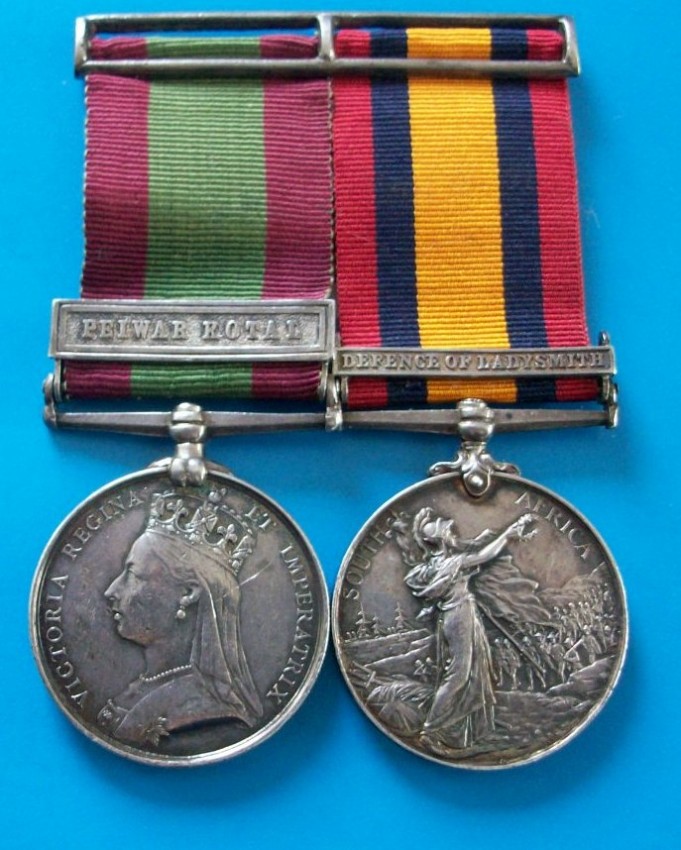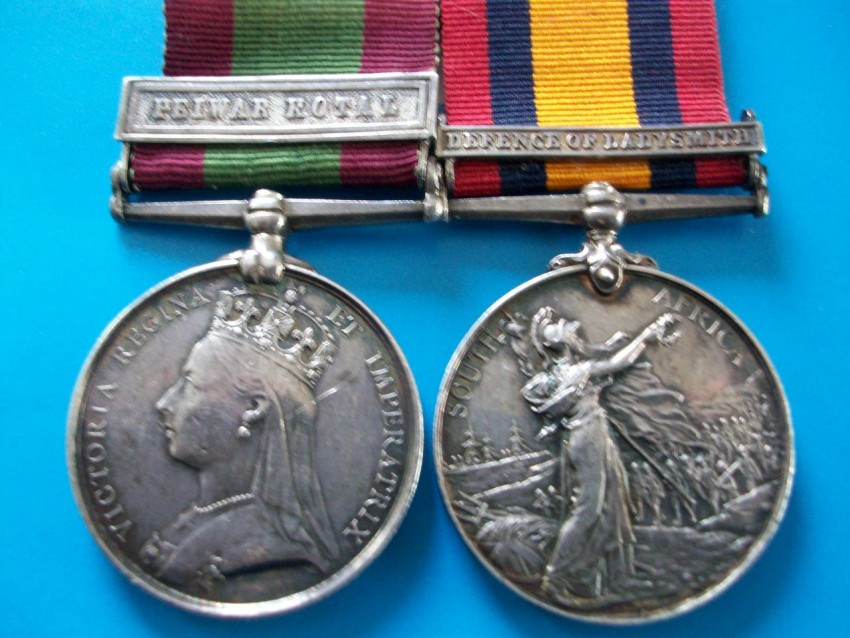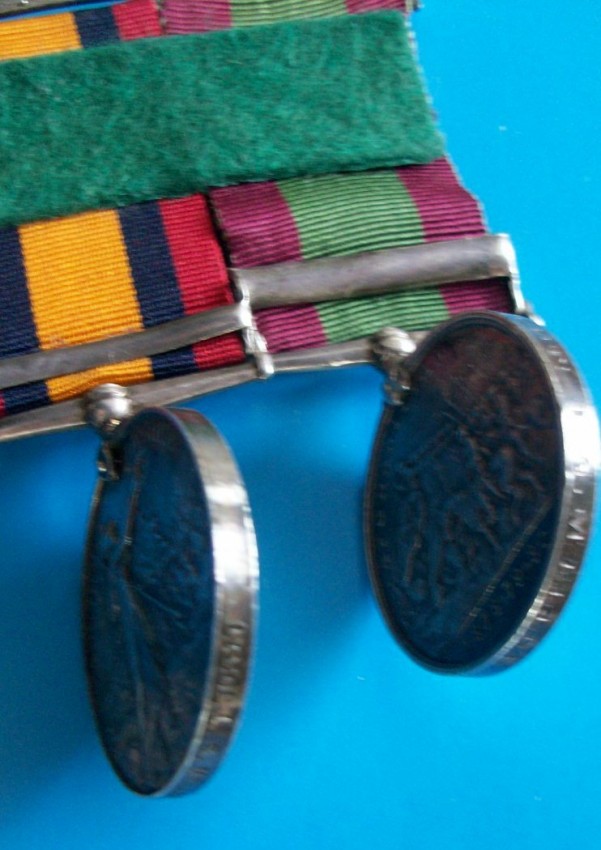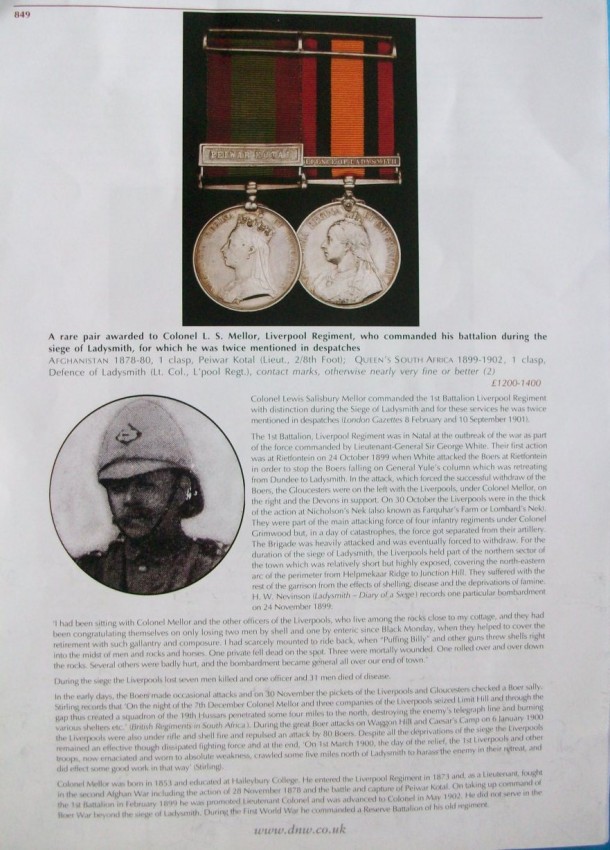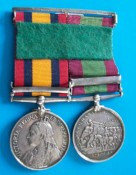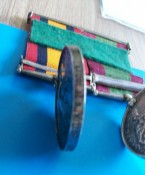Afghanistan 1878-80, 1 clasp. Peiwar Kotal (Lieut., 2/8th Fo ot); Queen's South Africa 1899-1902, 1 clasp, Defence of Ladysmith (Lt. Colonel., Liverpool Regt.), contact marks, otherwise nearly very fine or better(2). Estimate £1200-£1400- Lot 849 DNW Auctioneers and Valuers. 23.6.2005.
Colonel Lewis Salisbury Mellor, commanded the 1st Battalion Liverpool Regiment with distinction during the Siege of Ladysmith and for these services he was twice mentioned in despatches(London Gazettes 8 February and 10th September 1901).
The 1st Battalion, Liverpool Regiment was in Natal at the outbreak of the war as part of the force commanded by Lieutenant-General Sir George White. Their first action was at Rietfontein on 24th October 1899 when White attacked the Boers ar Rietfontein in order to stop the Boers falling on General Yule's column which was retreating from Dundee to Ladysmith. In the attack, which forced the successful withdraw of the Boers, the Gloucesters were on the left of the Liverpools, under Colonel Mellor, on the right and the Devons in support.
On 30th October the Liverpools were in the thick of the action at Nicholson's Nek (also known as Farquhar's Farm or Lombard's Nek). They were part of the main attacking force of four infantry regiments under Colonel Grimwood but, in a day of catastrophes, the force got seperated from their artillery. The Brigade was heavily attacked and was eventually forced to withdraw. For the duration of the siege of Ladysmith, the Liverpools held part of the northern sector of the town which was relatively short but highly exposed, covering the north-eastern arc of the perimeter from Helpmekaar Ridge to Junction Hill. They suffered with the rest of the garrison from the effects of shelling, disease and the deprivations of famine. H.W.Nevinson(Ladysmith - Diary of a Siege0 records one particular bombardment on 24th Novermber 1899:
'I had been sitting with Colonel Mellor and the other officers of the Liverpools, who live among the rocks close to my cottage, and they had been congratulating themselves on only losing two men by shell and one by enteric since Black Monday, when they helped to cover the retirement with such gallantry and composure. I had scarcely mounted to ride back, when "Puffing Billy" and other guns threw shells right into the midst of men and rocks and horses. One private fell dead on the spot. Three were mortally wounded. One rolled over and over down the rocks. Several others were badly hurt, and the bombardment became general all over our end of town.'
During the siege of Ladysmith the Liverpools lost seven men killed and one officer and 31 men died of disease.
In the early days the Boers made occasional attacks and on 30th November the pickets of the Liverpools and Gloucesters checked a Boer sally. Stirling records that 'On the night of the 7th December Colonel Mellor and three companies of the Liverpools seized Limit Hill and through the gap thus created a squadron of the 19th Hussars penetrated some four miles to the north, destroying the enemy's telegraph line and burning various shelters etc.' ( British Regiments in South Africa). During the great Boer attacks on Waggon Hill and Caesar's Camp on 6th January 1900 the Liverpools were also under rifle and shell fire and repulsed an attack by 80 Boers. Despite all the deprivations of the siege the Liverpools remained effective though dissipated fighting force and at the end. 'On 1st March 1900, the day of relief, the 1st Liverpools and other troops, now emaciated and worn to absolute weakness, crawled some five miles north of Ladysmith to harass the enemy in their retreat, and did effect some good work in that way' (Stirling).
Colonel Mellor was born in 1853 and educated at Haileybury College. He entered the Liverpool Regiment in 1873 and, as a Lieutenant, fought in the second Afghan War including the action of 28th November 1878 and the battle and capture of Peiwar Kotal. On taking up command of the 1st Battalion in February 1899 he was promoted Lieutenant Colonel and was advanced to Colonel in May 1902. He did not serve in the Boer War beyond the siege of Ladysmith.
During the First World War he commanded a Reserve Battalion of his old regiment.
- Binding Condition: Fine - Medal & Ribbons
- Overall Condition: Fine - Medal & Ribbons
- Size: 36mm Circular SILVER
- Sold By: Quathlamba Winds Books
- Contact Person: Ian & Yvonne Halford
- Country: United Kingdom
- Email: [email protected]
- Telephone: 01743 361772
- Preferred Payment Methods: Paypal-Cheques-Direct Transfer to UK Bank.
- Trade Associations: SABDA


